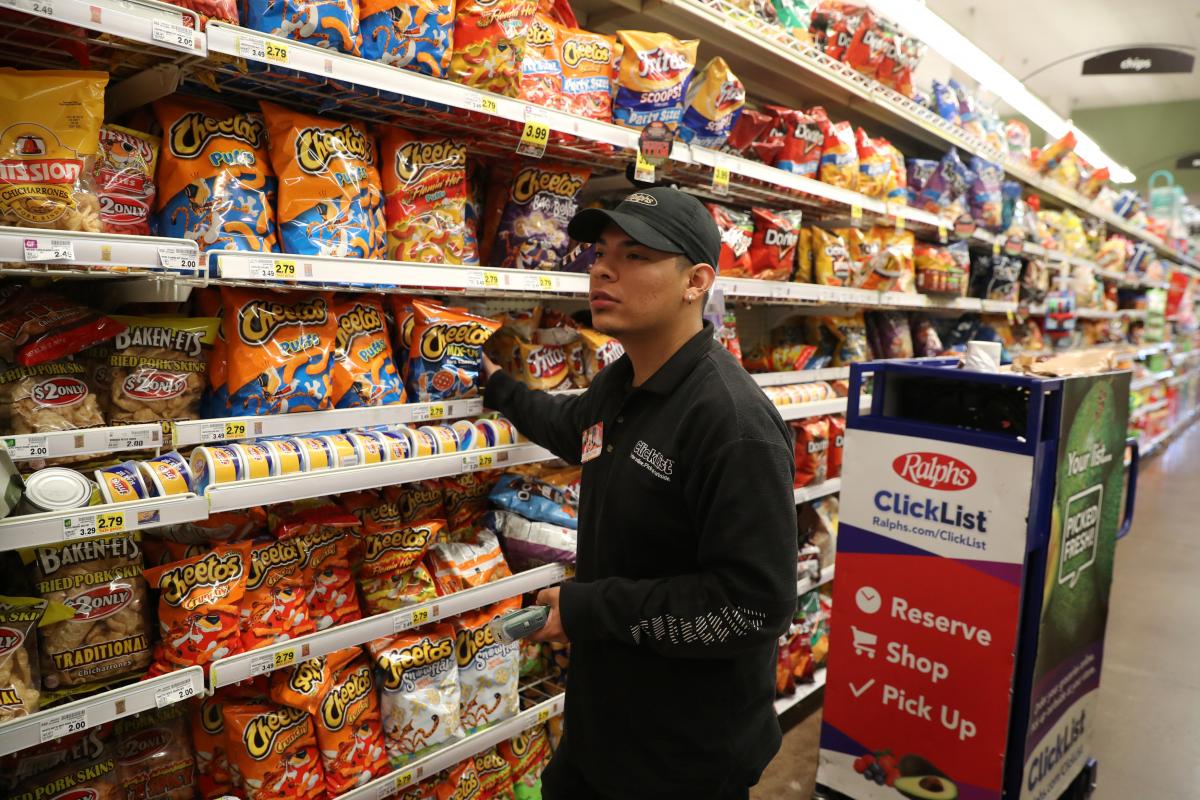
LOS ANGELES (Reuters) – As Amazon.com looks to upend the U.S. grocery market with home delivery, some veteran supermarket operators are betting on a different strategy: curbside pickup. Americans have long loved the convenience of drive-through service for burgers and coffee. Kroger Co (KR.N) and Walmart Inc (WMT.N) are tweaking that formula for groceries.
The companies have invested heavily in online systems that allow customers to order ahead from their neighborhood store. Workers pick and pack the products, then run them out to shoppers in the parking lot, the grocery version of carry out pizza. For the retailers, the service is cheaper than delivery, because customers do the driving. For shoppers, it means skipping crowds and queues at their local market, and no worries about missing packages or melted ice cream if they are not at home to meet the delivery guy.
Tony Sacco, who lives in the Los Angeles beach community of Playa Del Rey, is a regular user of the service at a nearby Ralphs supermarket, owned by Cincinnati-based Kroger. Each pickup costs $6.95, but the time-crunched married father of three says it is worth it.
“This is easy. Time is money,” said Sacco, 47, as a worker loaded bags into his SUV on a recent morning.
Retaining customers like Sacco is critical for traditional grocery retailers as they battle an array of upstarts bent on turning groceries into the next home-delivery juggernaut.
New entrants such as meal-kit company Blue Apron and organic food seller Thrive Market are peeling off coveted slices of their business. Amazon (AMZN.O), the nation’s largest online retailer, has amassed an 18 percent share of the $12.6 billion U.S. online grocery market mainly through the sale of packaged goods such as pasta and diapers. It is the largest player in a sector that is expected to grow to $41.7 billion by 2022, according to market research firm Packaged Facts.
(For a graphic on U.S. online grocery sales, see Kroger Co26.45
Miguel Lopez, who leads the ClickList team there, said it takes about 30 minutes to pick a $100 order- a $400 order takes an hour. The team tracks progress on a white board that showed weekly progress since the service debuted in January. The number of daily orders ranged from 13 to 36. Sales for the week Reuters visited, which included Thanksgiving Day, were on pace to hit a record of more than $12,000.
Analysts say typical Kroger stores have annual sales of around $30 million, excluding gasoline. Deutsche Bank analyst Shane Higgins said pickup already accounts for over 5 percent of sales in some locations.
Kroger declined to comment on the overall performance of ClickList but acknowledged costs are initially higher for pickup orders because of the additional labor involved. Company executives said increasing sales and efficiency can virtually eliminate that gap in as little as three years.
Another challenge to profitability is that pickup customers are not tempted by in-store impulse items. But the biggest risk, analysts say, is to do nothing and let customers drift to competitors that offer the service.
Shopper Kimberlee Isaacs says ClickList has kept her loyal to the Westchester Ralphs, where she drops $800 a month on groceries for her family of three.
“We use it every single week. I don’t go into the store unless I forgot something,” Isaacs, 50, said.
COMING ON STRONG
Meanwhile, Walmart, the nation’s top grocery seller, aims to add free curbside pickup at 1,000 stores next year, bringing the total to 2,100 of its 4,700 U.S. locations. It declined to discuss profitability of the service. But spokeswoman Molly Blakeman said the company decided to expand it quickly based on encouraging results. Pickup is winning converts such as Hudson, Florida shopper Steve Mondock, who had previously shunned Walmart.
“I hated the crowds, I hated the parking,” said Mondock, 55, who now buys most of his basics there.
Virtually every food retailer is now testing or adding pickup, including Publix, HEB, Meijer and Safeway. Target Corp (TGT.N), which just bought delivery company Shipt, is testing drive up for non-perishable groceries and other items.
“That’s why you want to be early so you can capture someone else’s customers,” said Loop Capital analyst Andrew Wolf.
 0 comments
0 comments





